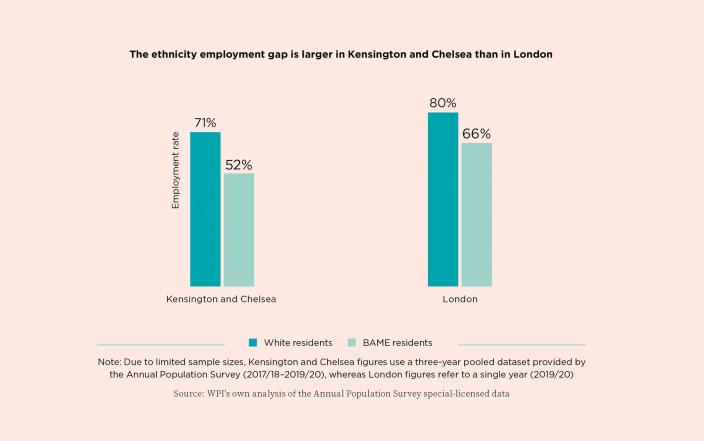Despite a strong labour market, not all Kensington and Chelsea residents participate equally in the economy.
Economic participation
- In 2019, the borough had a higher unemployment rate (4.9%) than London (4.6%) and Great Britain (3.9%), as well as a higher proportion of economically inactive working-age residents (30.1%, compared to 21.9% in London and 21.1% in Great Britain).
- Pre-pandemic, 71% of white working-age residents in the borough were in employment, compared to only 52% of BAME working-age residents – an ethnic gap that is significantly larger in the borough (19 percentage points) than in London as a whole (14 percentage points).
Image

- Economic inactivity and barriers to participation are linked with deprivation, with the areas with the highest economic inactivity also being some of the most deprived ones.
- There is a clear concentration of residents with disabilities in more deprived parts of the borough; almost 2 of every 3 disability benefit claimants in Kensington and Chelsea (63%) live in the 20% most deprived neighbourhoods of the borough.
Image

The ethnicity employment gap is larger in Kensington and Chelsea than in London
…because they don't claim benefit, they miss out a lot of schemes. They think it's like addiction – once you go, you are always on benefits...but then these young people are not getting the right opportunities.
Employee in a local community organisation
